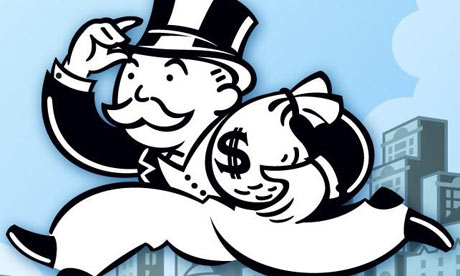HARMFUL: The United States Department of Agriculture continues to distribute food stamps (Electronic Benefit Transfer) cards to aid Americans not in need of assistance.
By Valeria Gutierrez, Staff Writer
As taxpayers, we are the first to feel the sting whenever the economy changes. A simple change of tax rate easily racks up the credit card bill–but where do the extra dollars go? While some go to help public schools and fix a few faulty roads, the rest go to government programs such as the United States Department of Agriculture (USDA),which is in charge of keeping the country fed and healthy. So, are we helping the homeless man and his family out with the extra cash? Not exactly.
Although it would ease our minds to know that every tax dollar feeds the needy, we are no longer helping the disadvantaged. After President Barack Obama signed the Stimulus Bill of 2009, he allowed a wider variety of Americans to qualify for the Supplemental Nutrition Assistance Program (SNAP, a.k.a. food stamps). The percentage of Americans on SNAP nearly doubled when the bill passed. The number of SNAP recipients has not increased due to the worsening economy, but has increased because people are taking advantage of the system. People become more dependent on the government as food stamps become easier to obtain. Consequently, the USDA wastes precious tax money that could help those who are truly in need.
Before the Stimulus Bill of 2009, SNAP participants needed to meet strict requirements to receive a few food stamps per month. One such requirement mandated that all able people must be working or looking for a job. Also, the amount of money given was previously dependent upon whether the applicant had a family. Now, just about anyone with a semi-low income can acquire food stamps, even without a job. Jason Greenslate from La Jolla, California, is a perfect example. Since Greenslate has no paycheck coming in, he qualifies for an Electronic Benefit Transfer (EBT) card. But instead of using his card to buy necessities, he splurges on gourmet food like lobster and sushi. Receiving SNAP from the USDA is no longer difficult, considering one can stop working and quickly receive his or her own EBT card, courtesy of the hardworking taxpayers.
Every day, Americans sign up for SNAP not because they need it but because they want the extra money. Since food stamps can only be used to buy food and non-alcoholic beverages in specific grocery stores, food stamp holders use money out of their own pockets for their personal desires. If the stamp holders were truly in need, every dollar would go towards basic necessities.
Although the USDA actively attempts to help the poor get back on their feet, the opposite effect occurs. The USDA gives our tax dollars to those who lack the bare necessities. However, it inadvertently aids those who are not so disadvantaged; if people are not willing to work hard for a better life, they leech onto the U.S. government. The underprivileged and lazy alike will eventually live off the assistance of the government and give their problems to future generations. After a few more presidential terms, food stamp users and those in “poverty” among Americans will increase to an unbearable amount for taxpayers.
Every once in a while, taxpayers’ money aids the needy. But usually, the valuable dollars go towards Americans who do not find them essential. Therefore, money that could possibly save or improve lives is wasted. While some disadvantaged Americans are in genuine need of food, others have taken advantage of the economic situation and gone onto Craigslist to sell their own food stamps. Although the situation seems unreal, just about anyone with Internet access can check and see the taxpayers’ money on sale from a range of 20 to 500 dollars.
There are many accurate, advantageous ways to protect the original purpose of the food stamps that work, such as drug testing. Everyone applying for SNAP should have to take and pass a drug test to be eligible. This would stop the addicts who want to participate in the SNAP program only to obtain their expensive drugs. The state of Utah currently practices such drug tests. Within the last year, the tests results turned down 12 recipients and saved a total of 5,000 dollars after expenses. Another solution would be to bring back the original rules of food stamps to help the low-income Americans regain their independence. The USDA could require recipients to hold or apply for a job in order to qualify for food stamps.
People can only be helped if they help themselves out first. Theoretically, food stamps benefit low-income Americans. But since the SNAP program’s eligibility requirements remain low, those who do not need the program take advantage of taxpayers’ money for “free” food. The USDA still fails to notice that the more assistance the government gives to the people, the worse the problem becomes.

